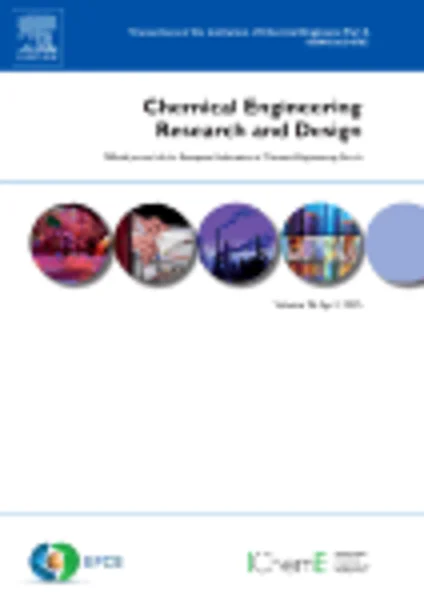-
experimental investigation and modeling hybrid nano-porous membrane process for industrial oily wastewater treatment
جزئیات بیشتر مقاله- تاریخ ارائه: 1392/07/24
- تاریخ انتشار در تی پی بین: 1392/07/24
- تعداد بازدید: 728
- تعداد پرسش و پاسخ ها: 0
- شماره تماس دبیرخانه رویداد: -
the aims of this work are to construct a pilot scale purification set-up using membrane process for tehran oil refining company desalter plant wastewater. the investigation was shown that the high amount of impurities in the feed was the main reason of low permeation flux. the nano-porous membrane-powdered activated carbon (npm–pac) was employed to settle this problem. results demonstrated npm alone was ineffective in removing tss, cod, and toc. in the npm process the removal of cod and toc are around 62.5 and 75.1%, respectively, and the steady permeation flux (spf) is around 78.7 l/(m2 h). optimum pac dosage, which leads to less deposit layer with high porosity on the membrane surface, could increase permeation flux up to 133.8 l/(m2 h), the removal of cod and toc, 78.1% and 90.4%, respectively, and also decreased steady fouling resistance (sfr) around 46.1%. hermia's models were employed to investigate mechanism of preventing membrane fouling. after coagulation, the kinetic constants, kb, ki, ks, and kc, showed lower amounts when npm filtration used alone. thus, a npm–pac hybrid membrane system has the potential to be an effective method to improve npm removal efficiency in high percentages as well as to improve membrane fouling and permeation flux in desalter plant.
مقالات جدیدترین رویدادها
-
استفاده از تحلیل اهمیت-عملکرد در ارائه الگوی مدیریت خلاقیت سازمانی و ارائه راهکار جهت بهبود
-
بررسی تاثیر ارزش وجوه نقد مازاد بر ساختار سرمایه شرکت های پذیرفته شده در بورس اوراق بهادار تهران
-
بررسی تأثیر سطح افشای ریسک بر قرارداد بدهی شرکت های پذیرفته شده در بورس اوراق بهادار تهران
-
بررسی تأثیر رتبه بندی اعتباری مبتنی بر مدل امتیاز بازار نوظهور بر نقد شوندگی سهام با تأکید بر خصوصی سازی شرکت ها
-
تأثیر آمیخته بازاریابی پوشاک ایرانی بر تصویر ذهنی مشتری پوشاک ایرانی (هاکوپیان)
-
ضرورت بکارگیری سیستم hse در مدیریت پروژه های عمرانی کشور (مطالعه ی موردی: تقاطع غیر هم سطح "بهارستان" شهرستان خرم آباد)
-
سی آداب شب یلدا و چهارشنبه سوری در آذربایجان شرقی (با تأکید بر گردشگری فرهنگی)
-
بررسی کتاب هدیه های آسمان نهم متوسطه با روش کلوز
-
ارزیابی و تعیین خصوصیا مکانیک شکست مود مرکب جوش در اتصالات سکوهای ثابت دریایی با آزمایش آرکان
-
پاتولوژی جغرافیایی ترکمنستان
مقالات جدیدترین ژورنال ها
-
مدیریت و بررسی افسردگی دانش آموزان دختر مقطع متوسطه دوم در دروان کرونا در شهرستان دزفول
-
مدیریت و بررسی خرد سیاسی در اندیشه ی فردوسی در ادب ایران
-
واکاوی و مدیریت توصیفی قلمدان(جاکلیدی)ضریح در موزه آستان قدس رضوی
-
بررسی تاثیر خلاقیت، دانش و انگیزه کارکنان بر پیشنهادات نوآورانه کارکنان ( مورد مطالعه: هتل های 3 و 4 ستاره استان کرمان)
-
بررسی تاثیر کیفیت سیستم های اطلاعاتی بر تصمیم گیری موفق در شرکتهای تولیدی استان اصفهان (مورد مطالعه: مدیران شرکتهای تولیدی استان اصفهان)
-
نقش شخصیت در تعهد و سلامت سازمانی پرستاران شاغل در بیمارستان های شهر اراک
-
ارزیابی سطح توسعه یافتگی شهرستان های استان کرمانشاه از لحاظ زیرساخت های گردشگری با استفاده از تکنیک vikor
-
ارزیابی عملکرد زنجیره تأمین شرکت های تولیدی با تلفیق مدل مرجع عملیات زنجیره تأمین (scor) و تکنیک danp
-
استفاده از فناوری مالتی پلکس تقسیم طول موج در ارتباطات فیبر نوری dwdm
-
designing manhole in water transmission lines using flow3d numerical model




سوال خود را در مورد این مقاله مطرح نمایید :